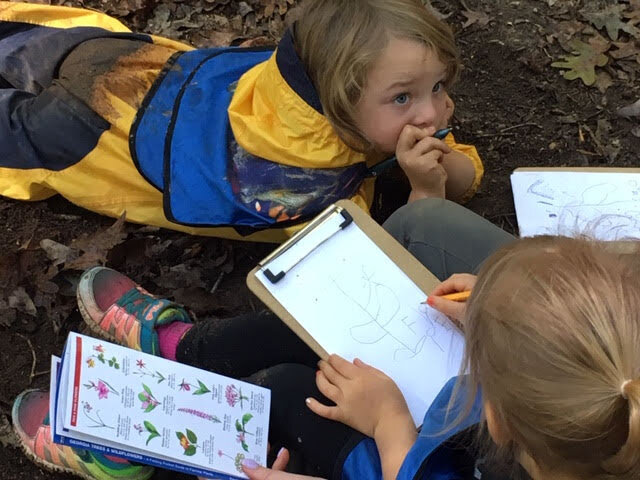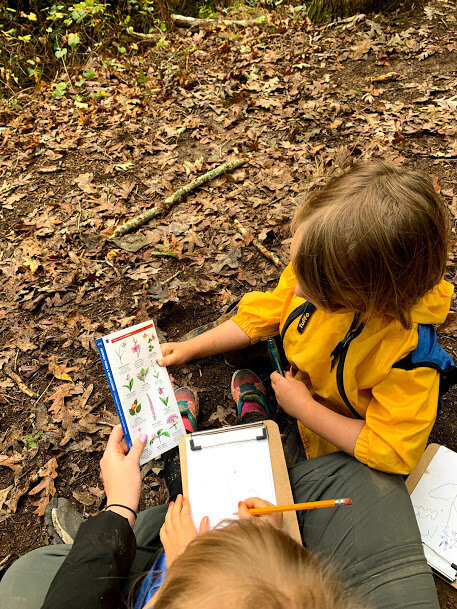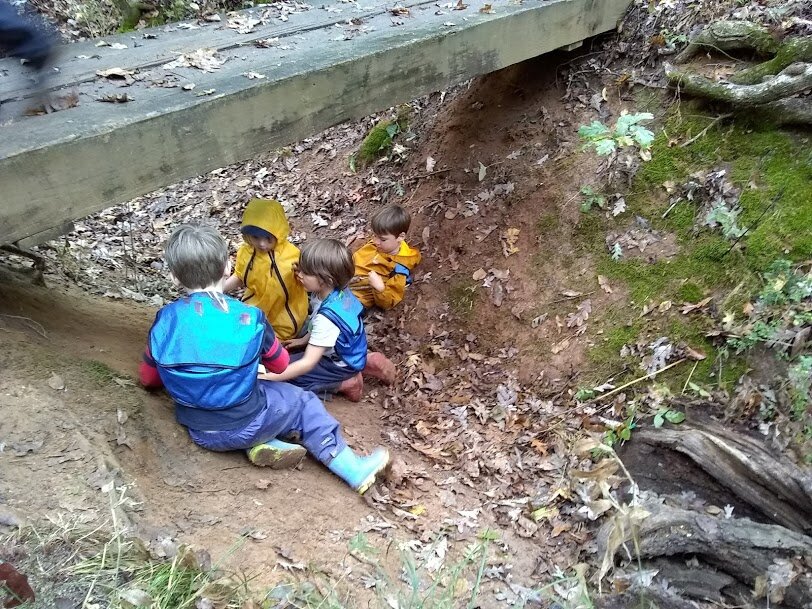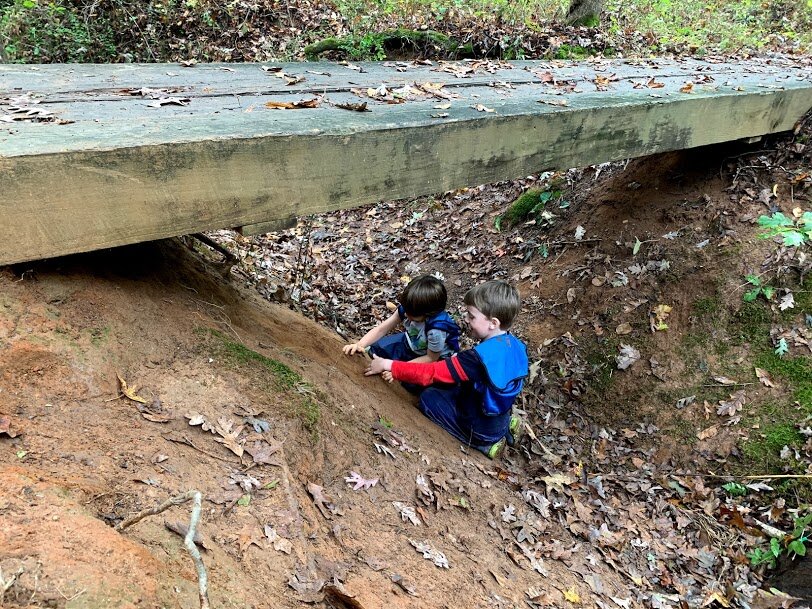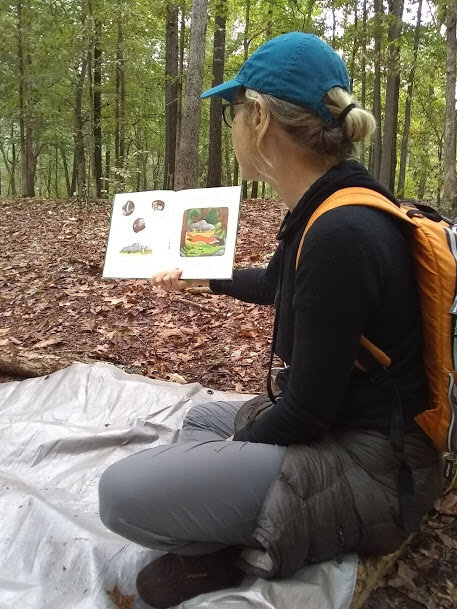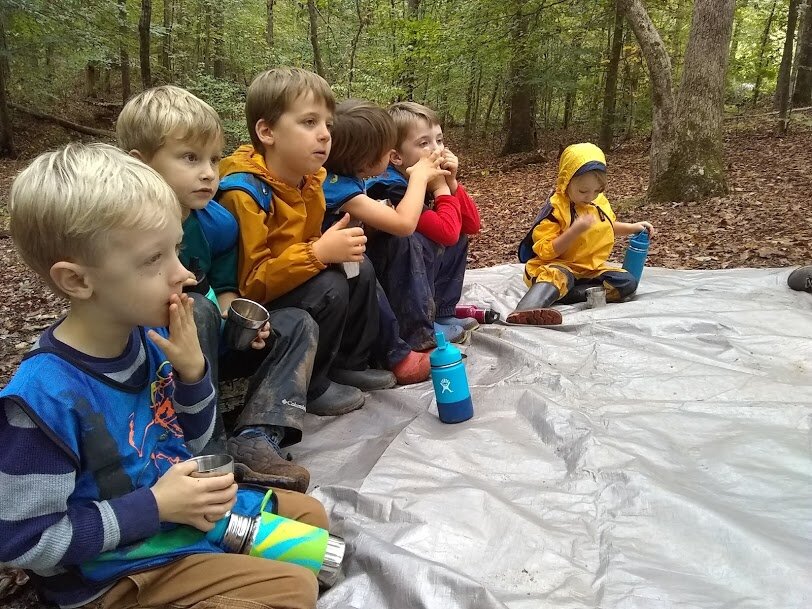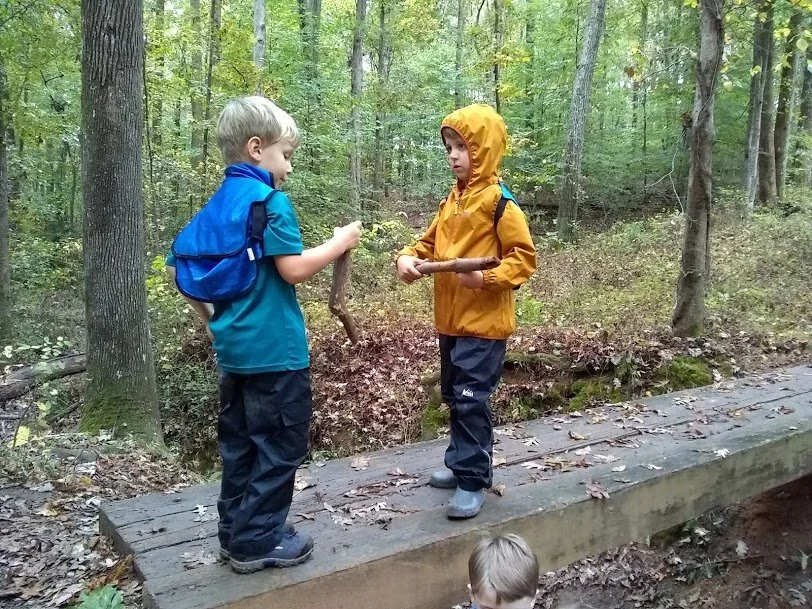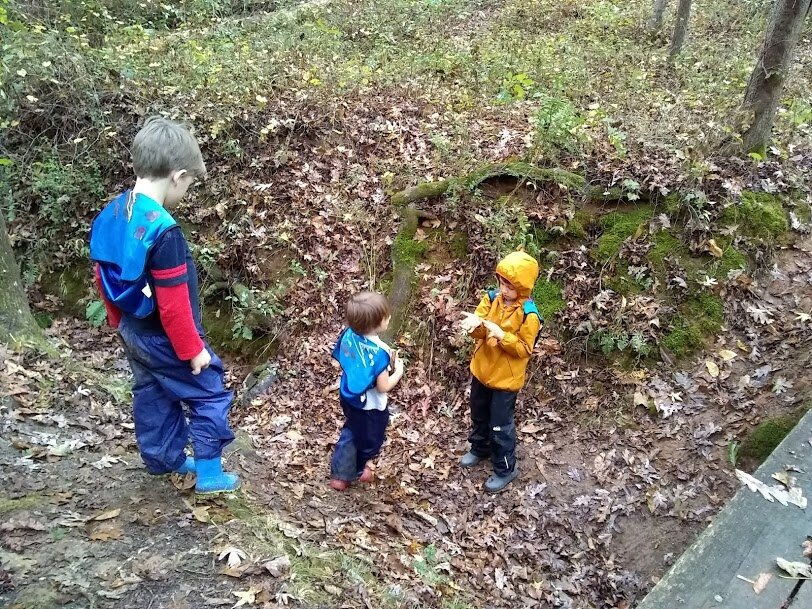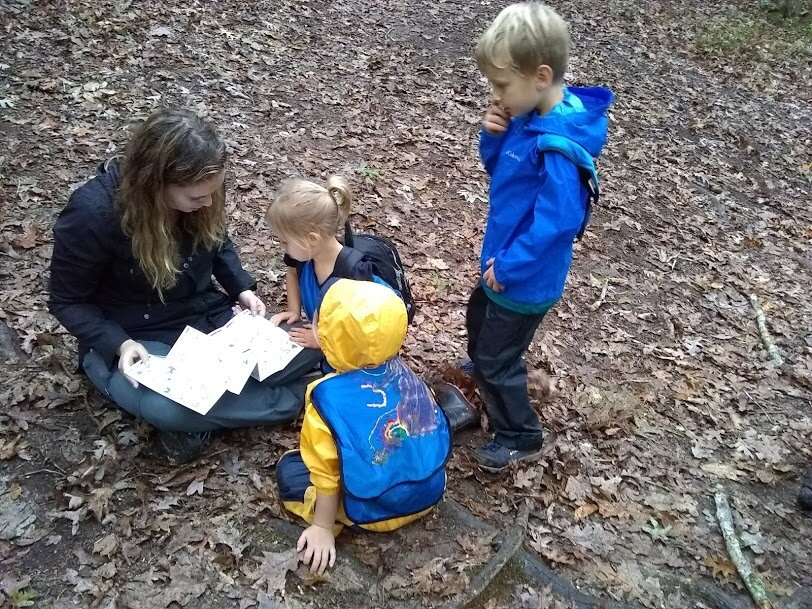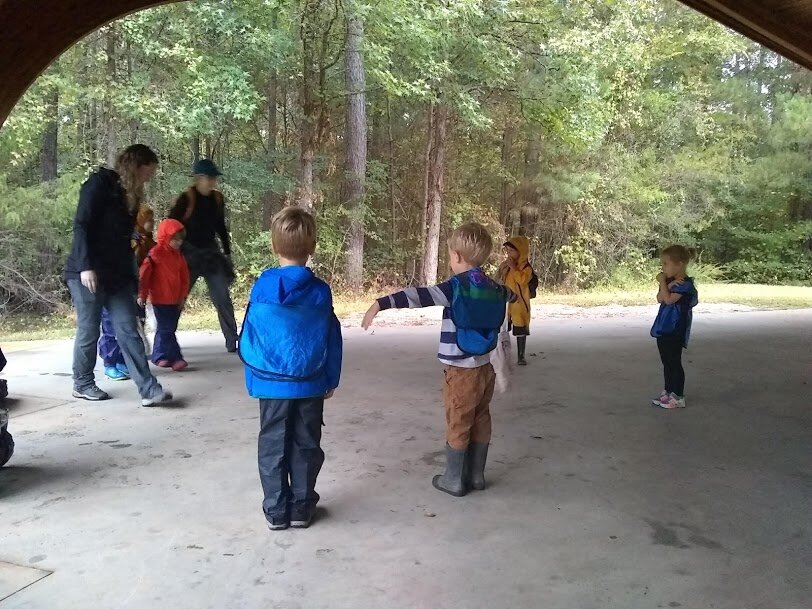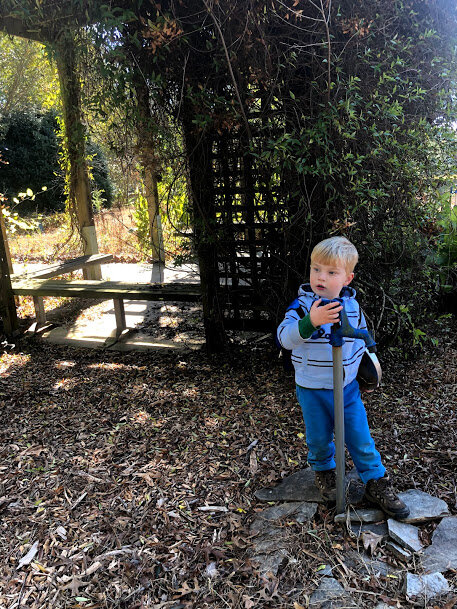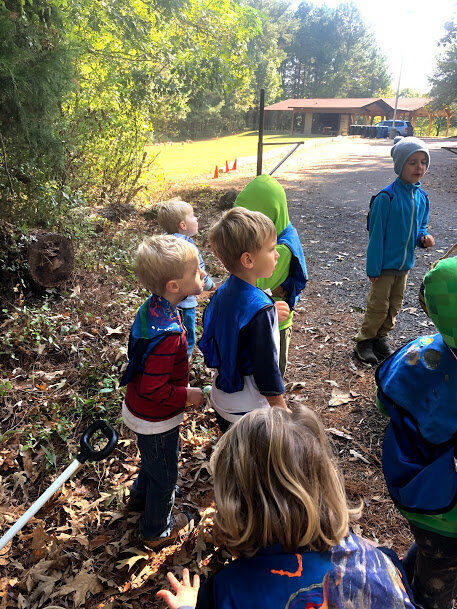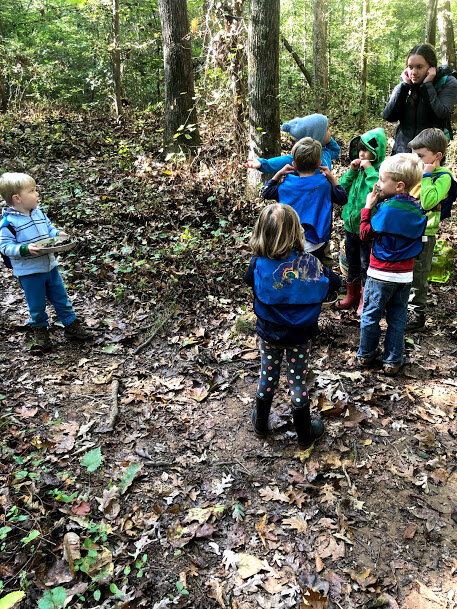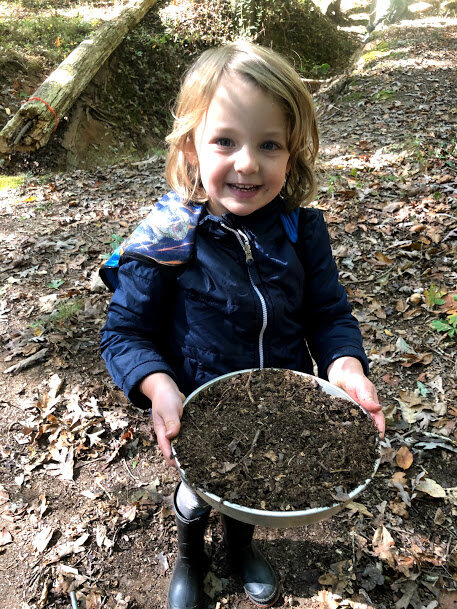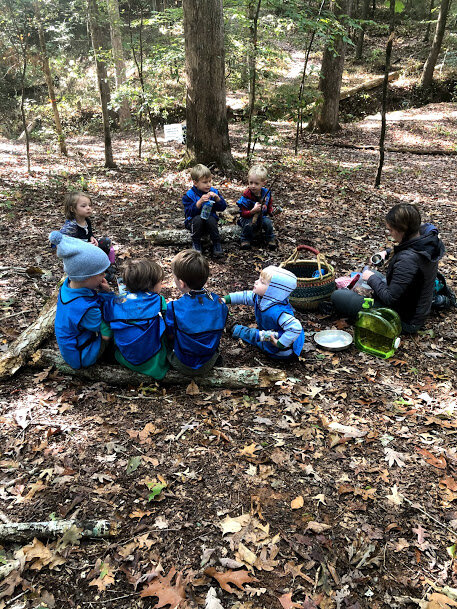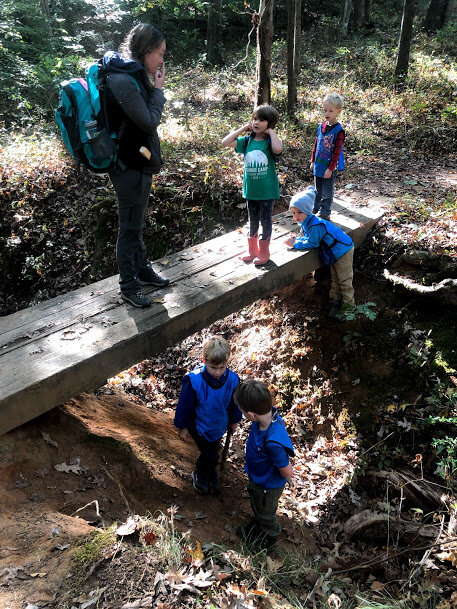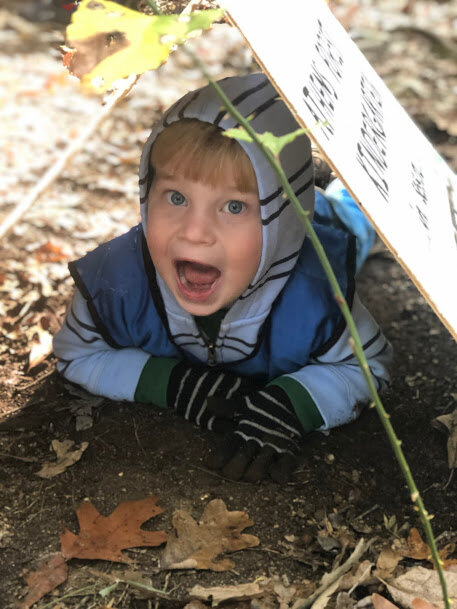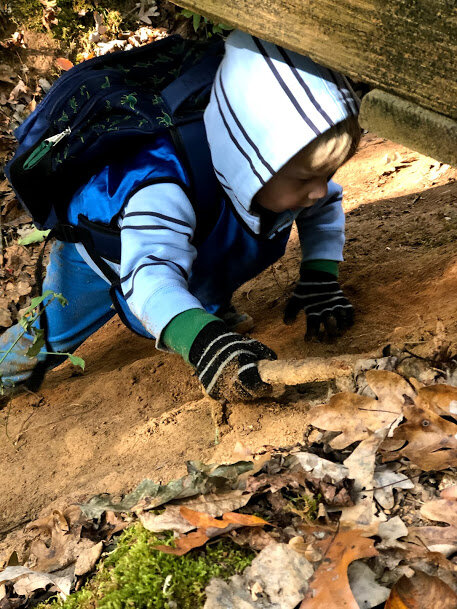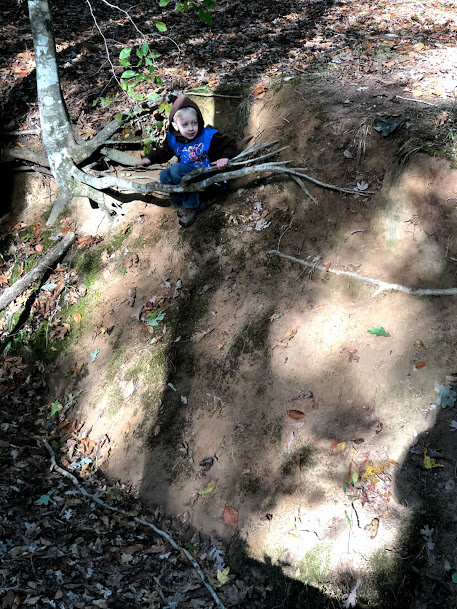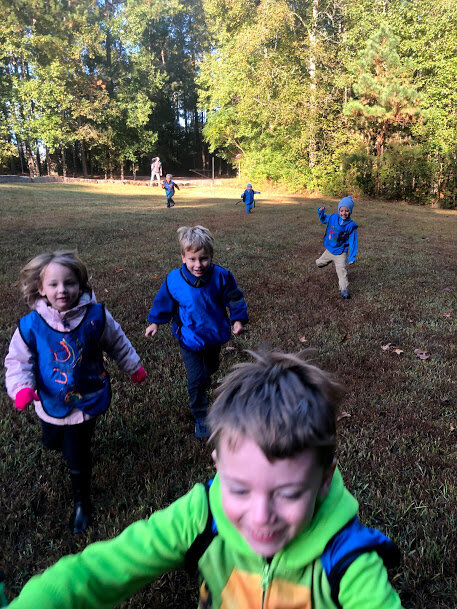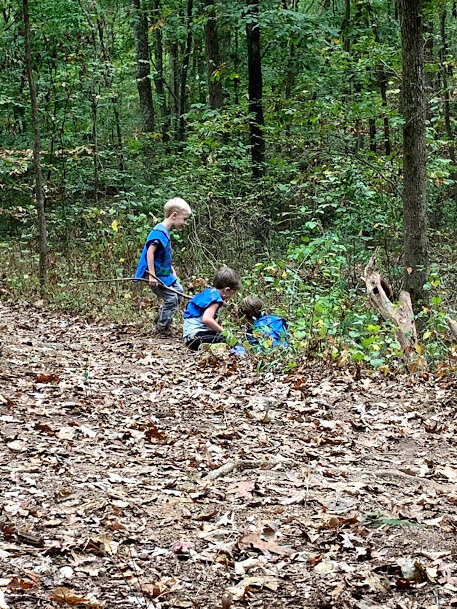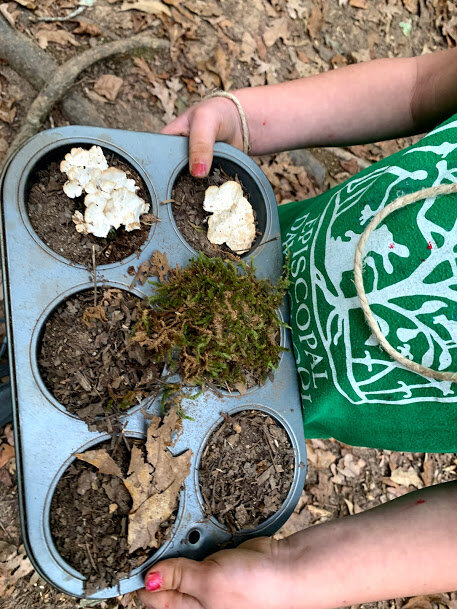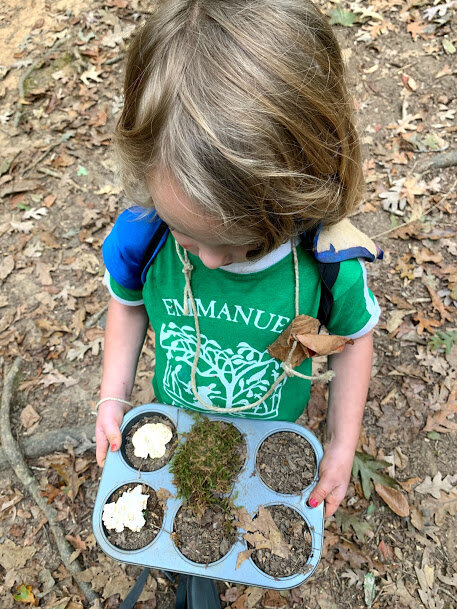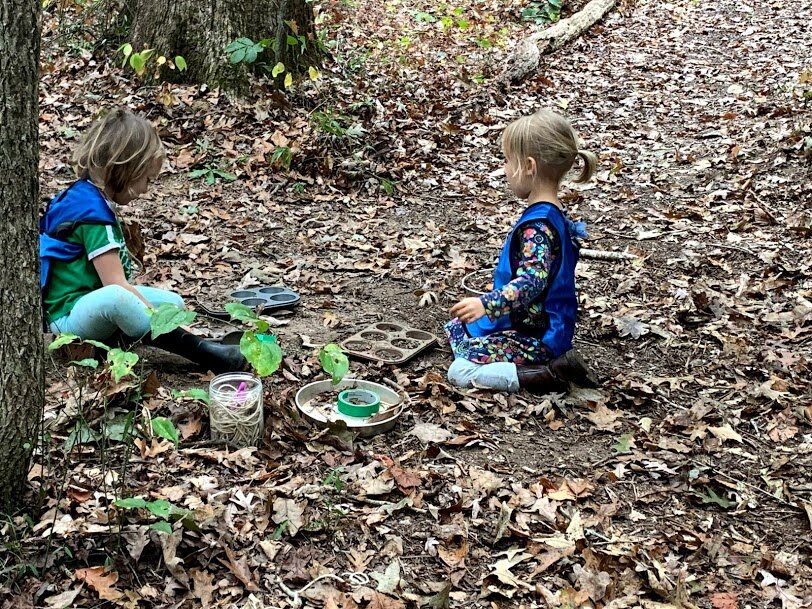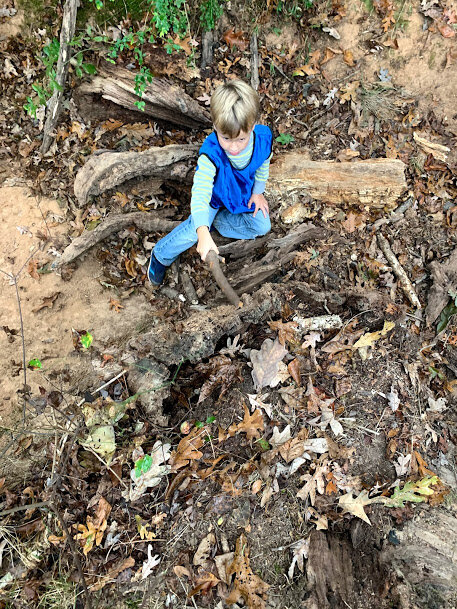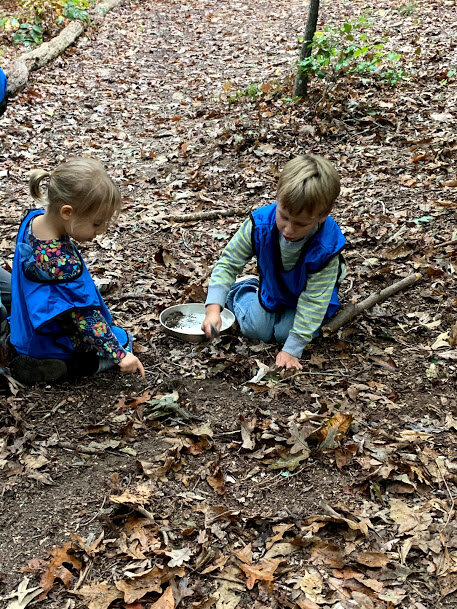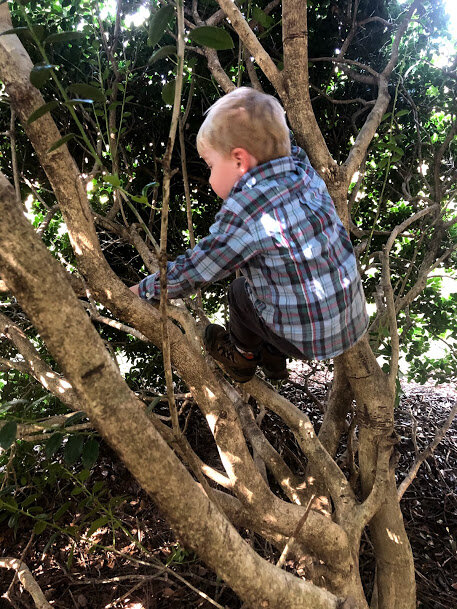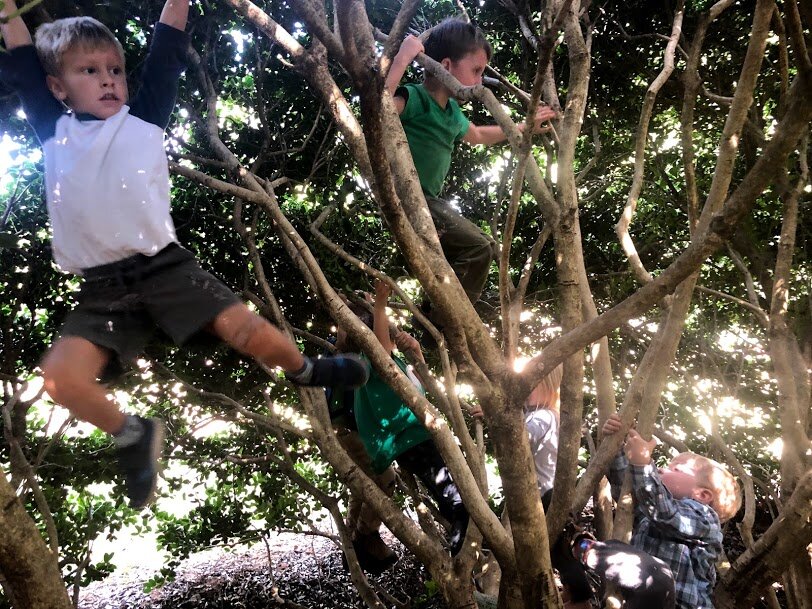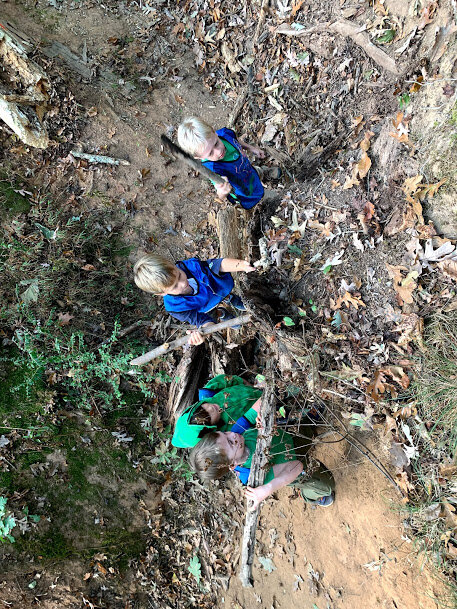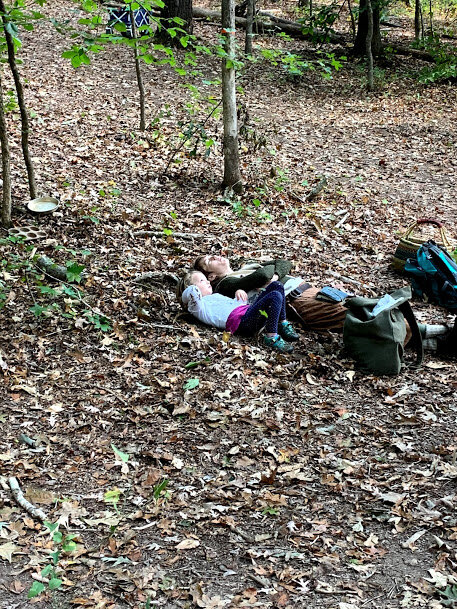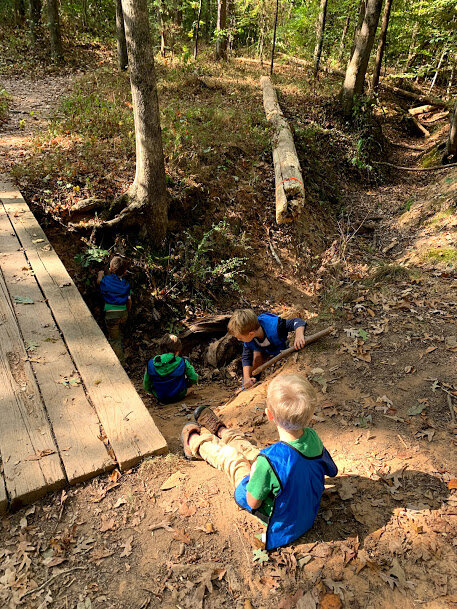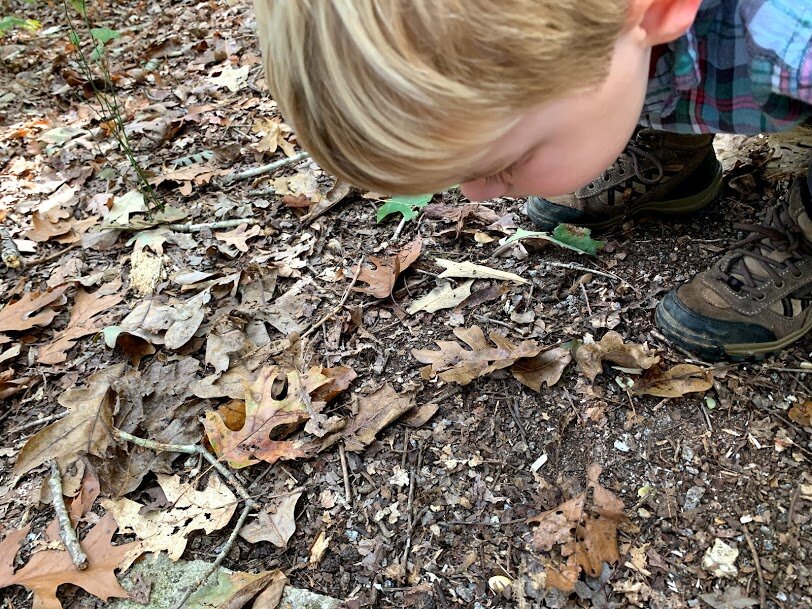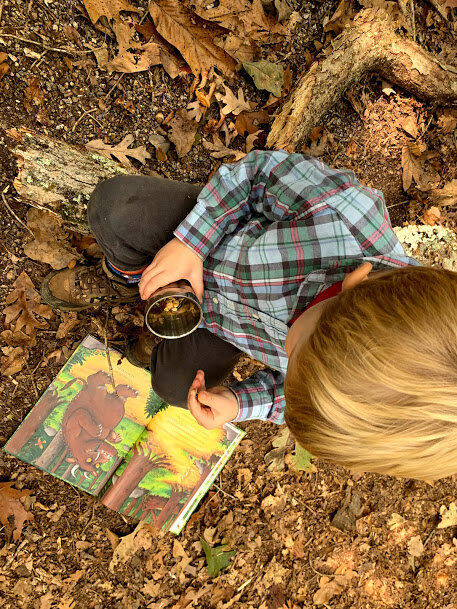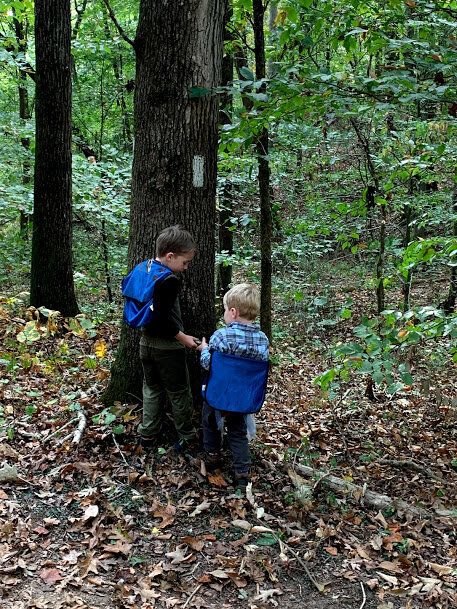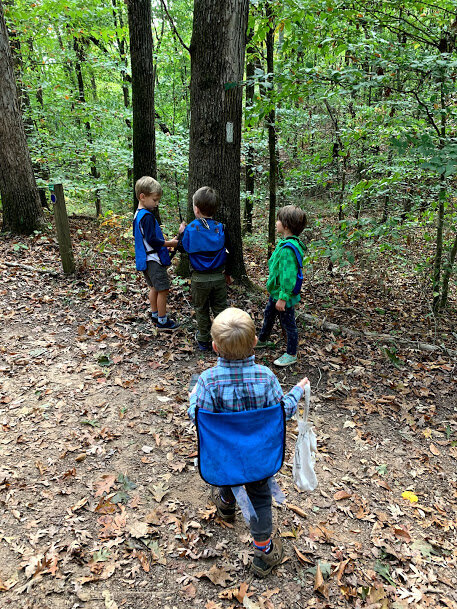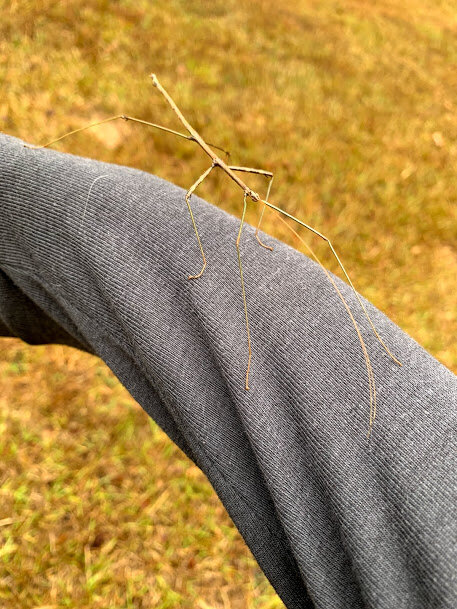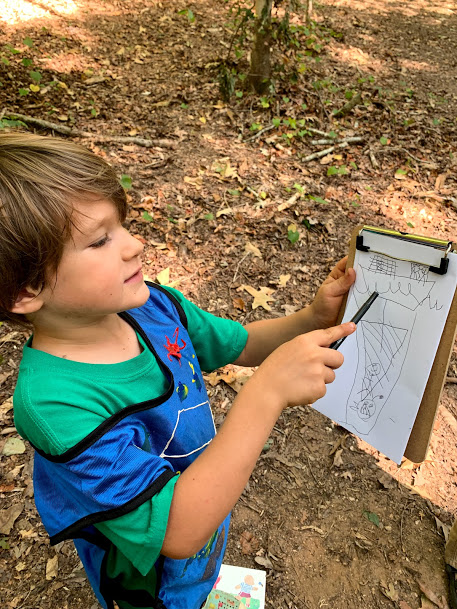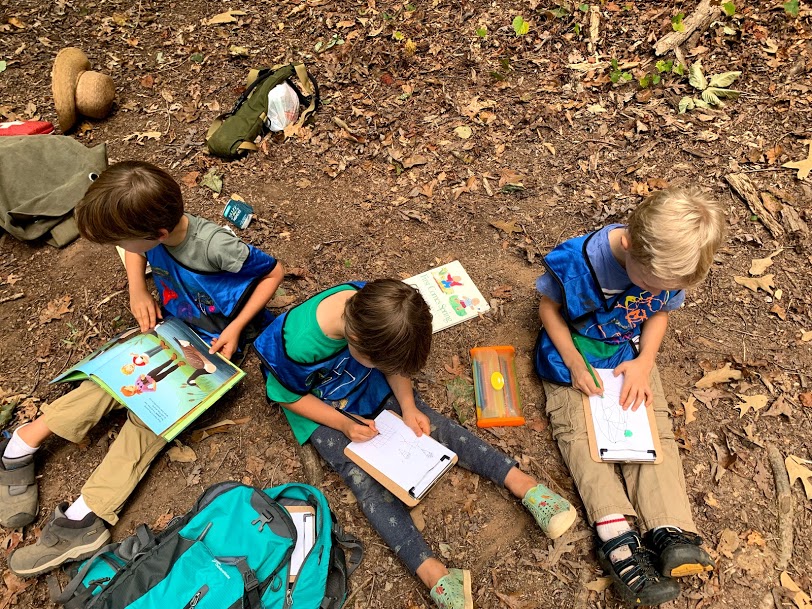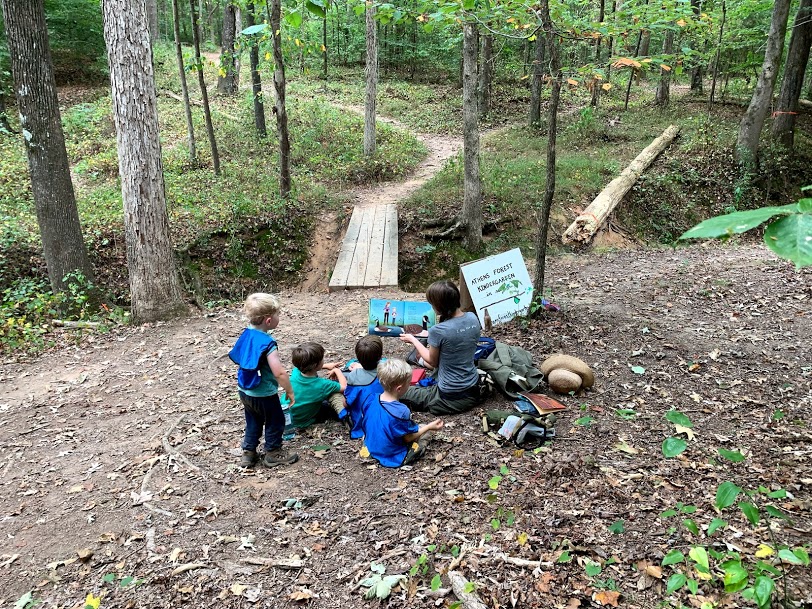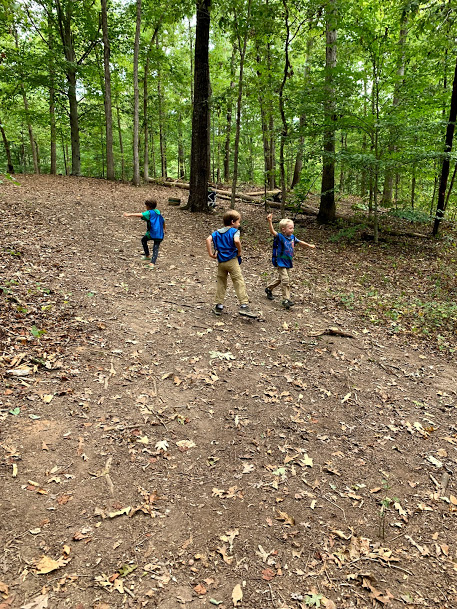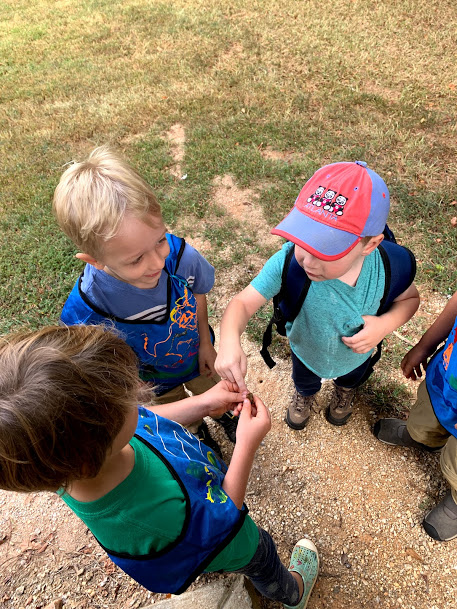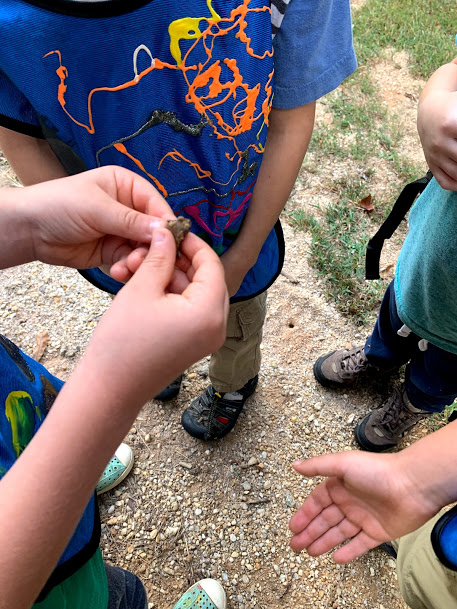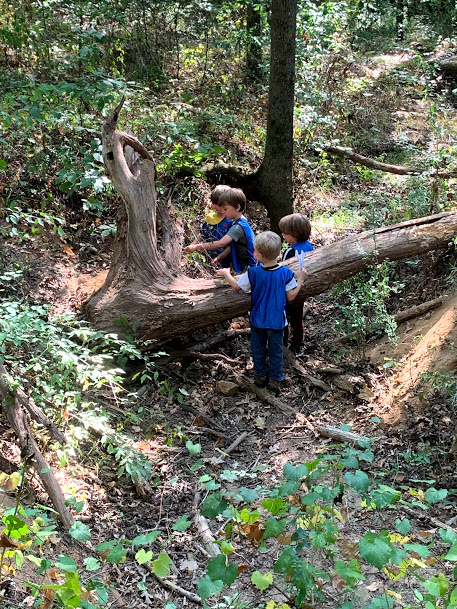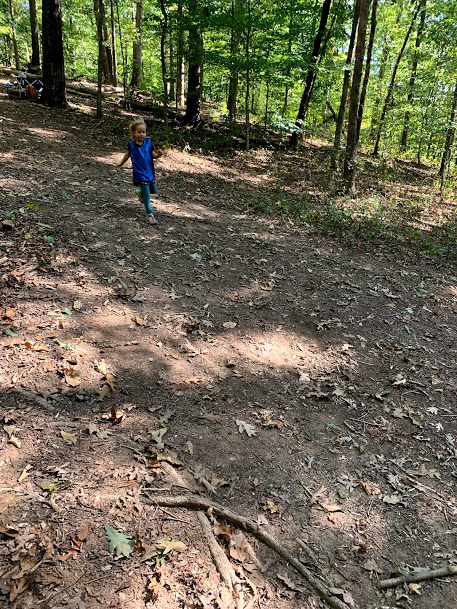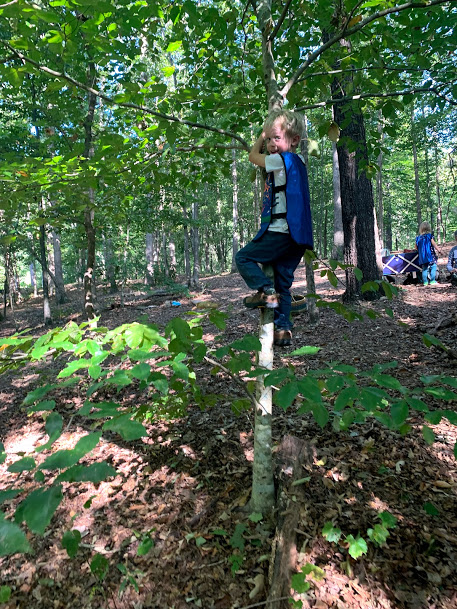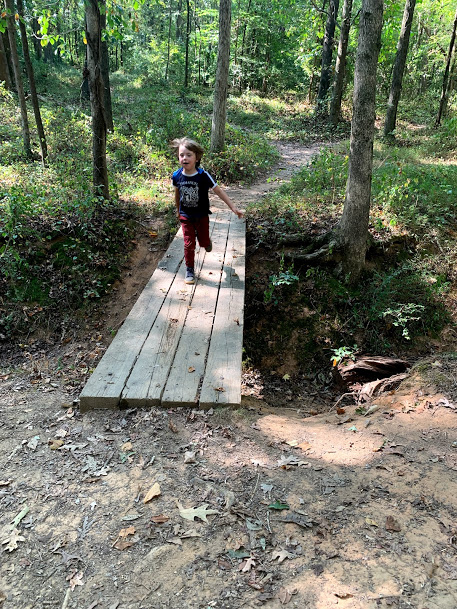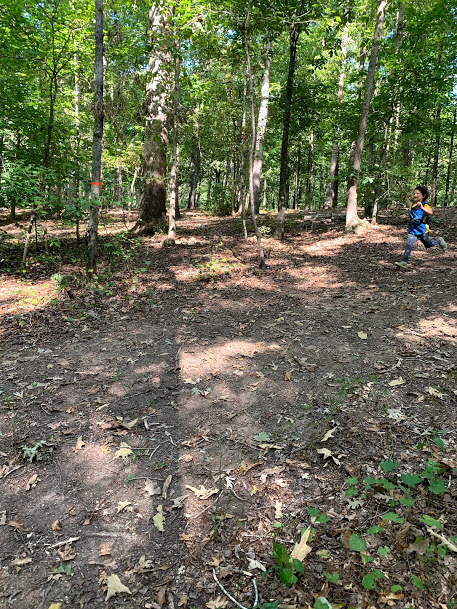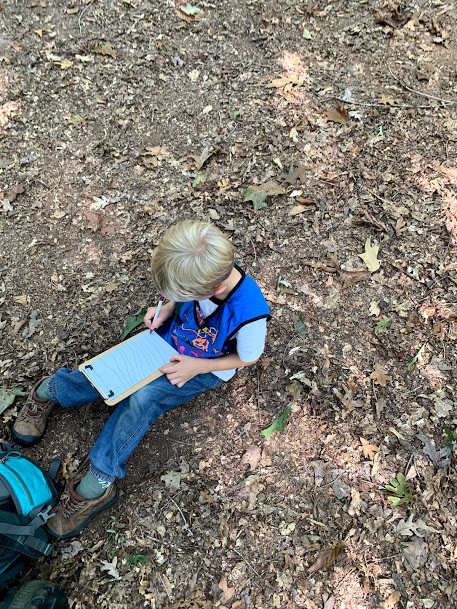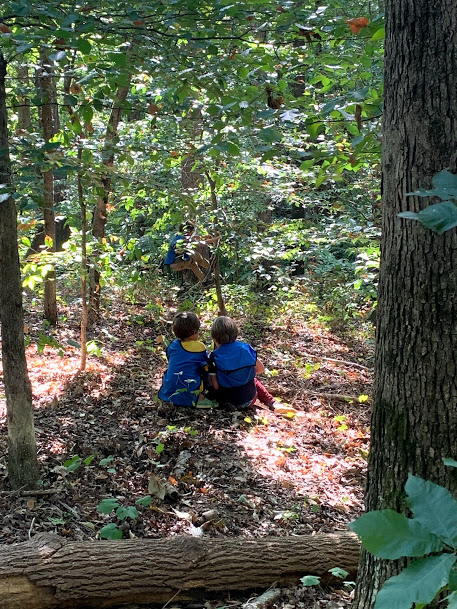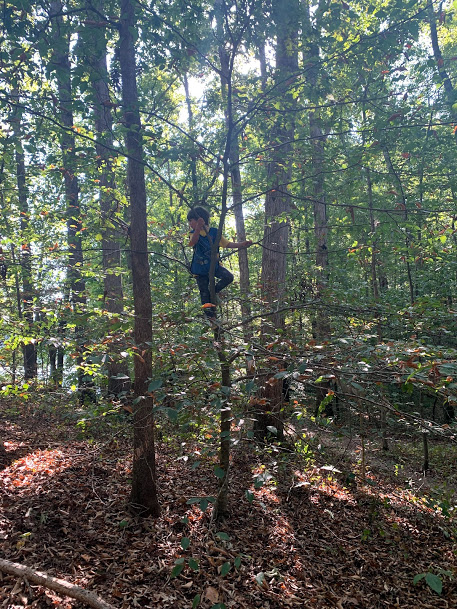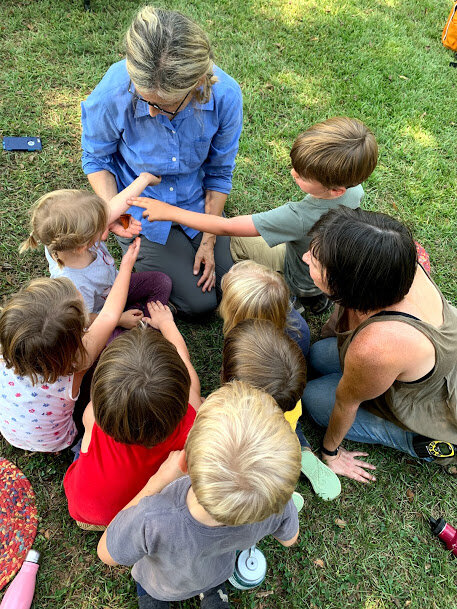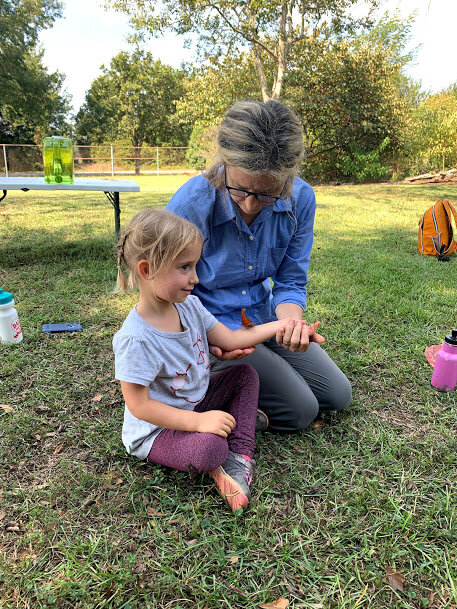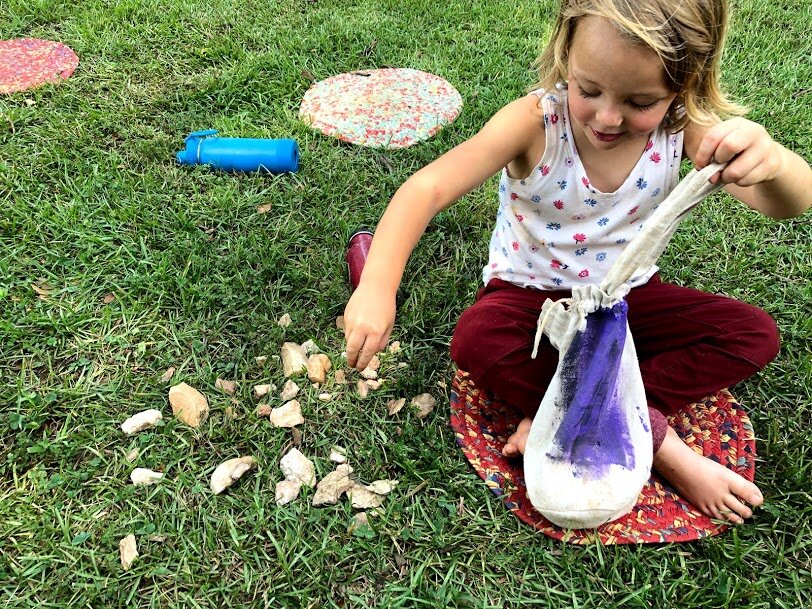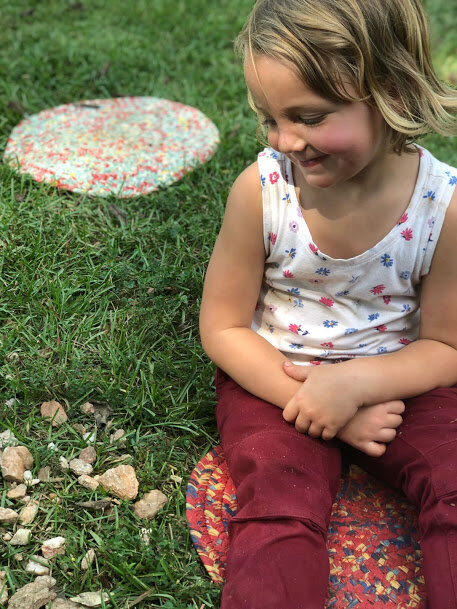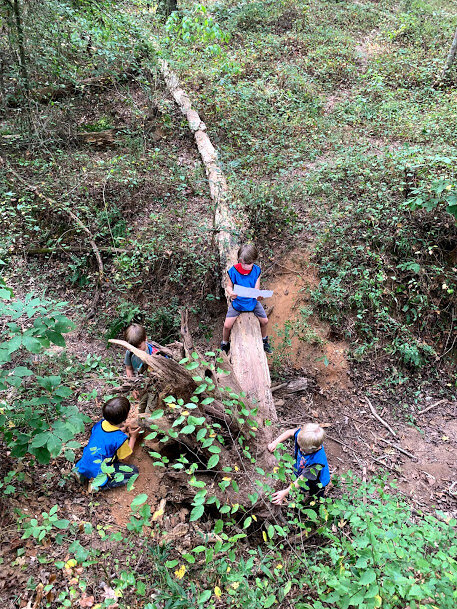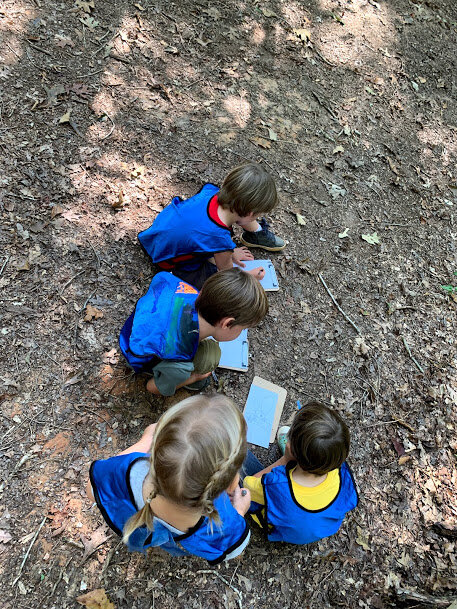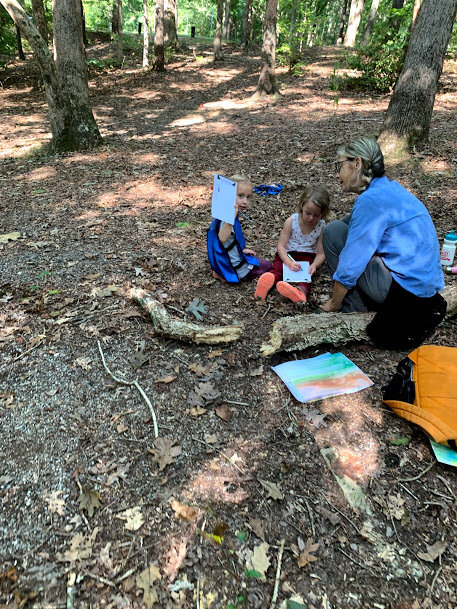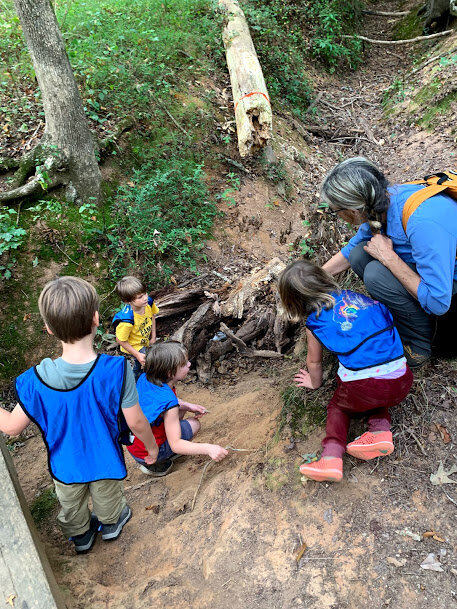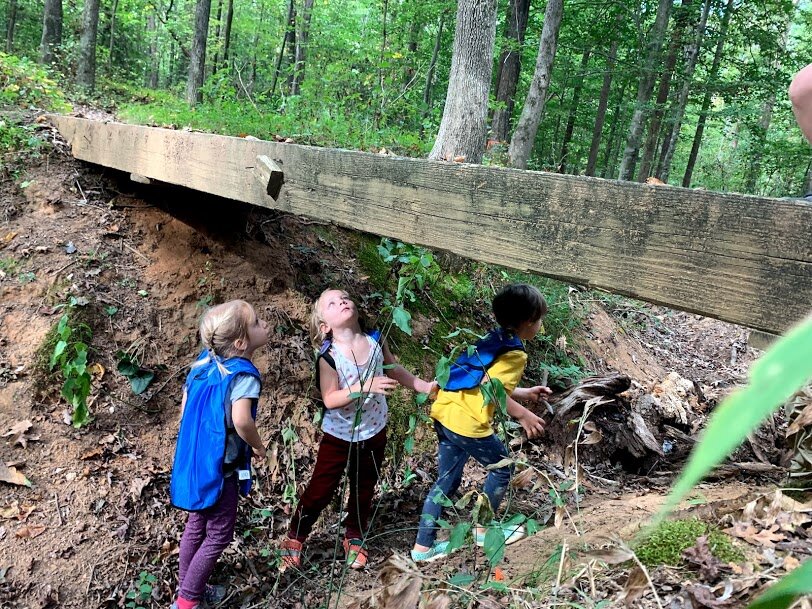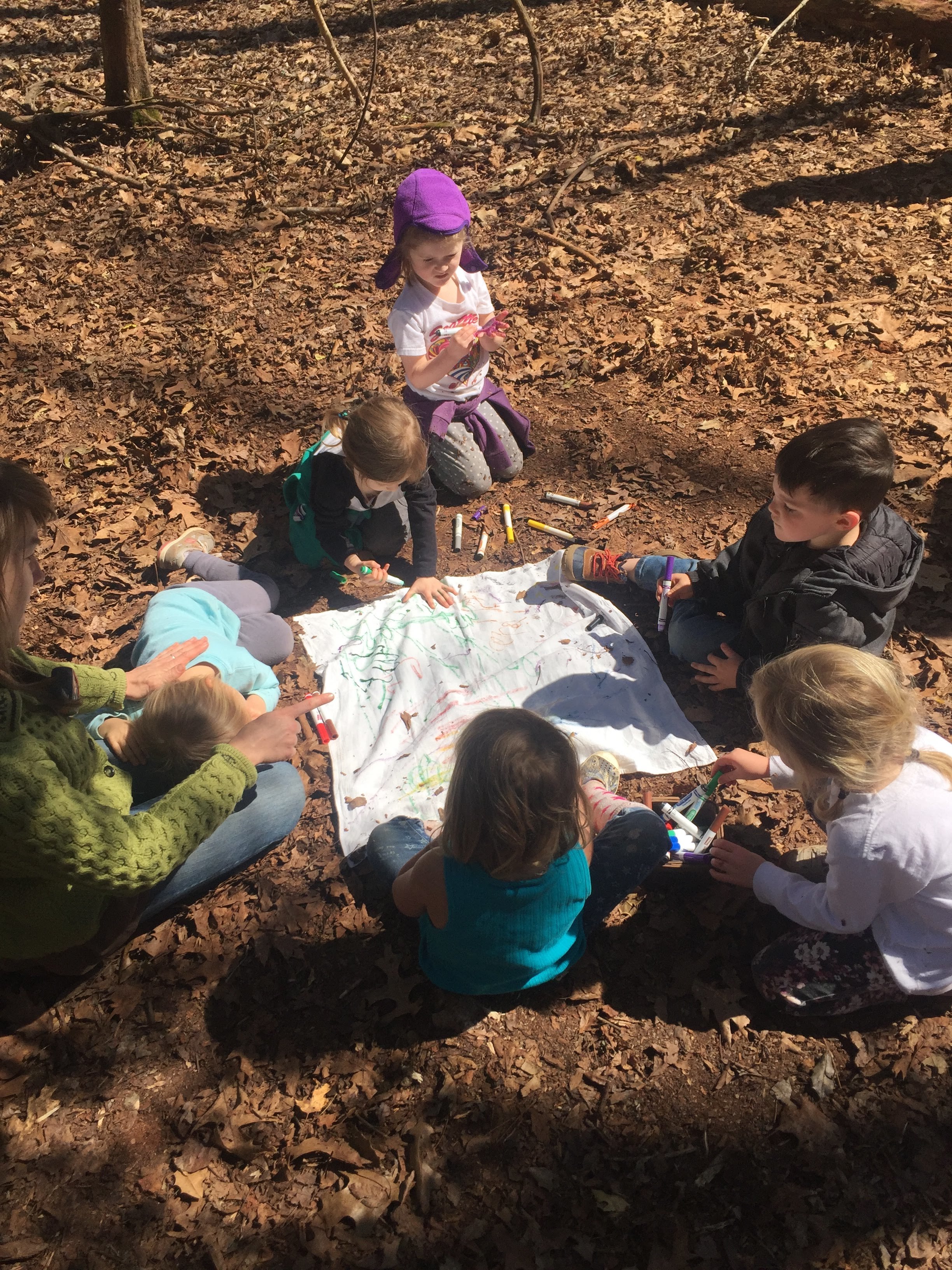Returning from Spring Break is a good time to introduce a new element to our Forest Kindergarten. This week, we introduced the idea of a flag for Forest Kindergarten. The teachers want the children to know the flag, and always look for it as a marker of our place in the woods. But the children also got excited when we introduced the concept. We explained that whenever we are at a site, we will plant the flag and the children have to always be able to see it. To make sure it is fun to spot, we asked them how we might decorate it. Immediately, children had ideas. Sammy said the first thing we should do is put “AFK” on it. When asked, he explained that AFK was for Athens Forest Kindergarten. Several children suggested we use markers to color it, and others wanted to paint it. We let them know that we would decorate the flag in the forest, and let them continue to think about what they wanted on it.
Out in the forest, we practiced finding our flag. The children were engaged in making sure they could see it from whatever spot they were playing in- and several wanted to help Amy plant the flag in the forest. Mabry helped Amy dig a hole to put the flag in, and several children (Cristian, Margaret, and August) searched for a big stick to tie our flag to. They all still wanted to know when we would decorate it, and we let them know we would do it after snack time. We could see the attachment to the flag as part of our group growing, as we incorporated it into our routine at Root World.
Snack time and small group time came really quickly this week, perhaps because of the amazing sunny weather. Our morning at Root World was very settled, and we transitioned easily into snack. We read a book called “Spectacular Spots” that illustrates many patterns and brightly colored animals, and enjoyed reading “Bear’s Loose Tooth” at snack too! After snack, we offered the children two choices: 1. Decorate our flag with Sarah or 2. Go on a Spring Color hunt with Amy. The children make their own choice about the small group they want to go to, and August, Cristian, Wendell, Felix and Sammy decided to decorate the flag, while Charlotte, Luke, Larkin, Margaret, Eden, Mabry, and Ellie came on the color hunt.
We enjoyed looking for colors on our color hunt and spotted the purple on the redbud trees, that was close to a color match with Amy’s jacket! We also spotted purple violets, green baby leaves, and Luke really looked hard for the color red. Brown, of course, was still the predominant color we found. But the colors themselves were not even the most exciting part of our color hunt. We decided to go off the trail to look for more colors, and as we navigated through the woods we came across a big, rotting log. The children took an immediate interest in it. Amy drummed a little on it as we waited for the group, and the children became interested in exploring the different sounds that the log could make. It was interesting to see how they interpreted music through the log, and to hear what the log sounded like to them. We noticed that it sounded like a helicopter passing overhead, and that it sounded different on the sides than on the top.
Once the children were engaged with the log, their exploration of the log took off and so many more interesting ideas began to emerge that made the log a place we could have stayed for the next hour. As Amy watched the children exploring and sharing in dialogue together, it made her think about what our image of the child is. So often, we want to look at this type of exploration as an opportunity for the teachers to step in and take advantage of a “teachable moment”. Amy could have started to tell the children all about the many important ways that rotting logs contribute to the forest ecosystem, and then asked them several questions to collect data on what they had learned- or to make sure they were growing concepts that would make them ready for school. Had Amy started talking here in the moment, several children probably would have listened, and she could have felt satisfied that she filled them with knowledge. However, she chose to watch and record what the conversations were that were happening between children and what dialogues the children were having with the log through their words and actions. Our image of the child at Forest Kindergarten is that each child brings their own knowledge and capabilities to the experience, and we as the teachers learn alongside them and honor their methods for bringing meaning to their experiences. While watching, Amy observed this dialogue emerge:
Ellie found a place on the log to sit, and immediately noticed there were some holes in the log. Without seeing any beetles, she announced that the holes were probably homes for beetles, and she began to feel protective of the space she inhabited on the log. Further down the log, Luke had been taking many small pieces of the log off. The destruction of the log was also a very satisfying activity that several other children and our Forest Helper, Graham, became deeply involved in. Many pieces of the log had a very spongy texture that the children delighted in, and our Forest Kindergarten children know from experience that all sorts of creatures and other treasures might be hiding in the log. But, when Luke came up to the area where Ellie was sitting, she defended her space. She did not want him to destroy the area of the log she was sitting on, because she wanted to protect the unseen beetles home. Luke still wanted to pull off more of the log and Amy helped Ellie and Luke work out an agreement so that he found other spots on the log to continue to pull apart, while Ellie could continue to protect her area. Around this time, we heard from the children at the top of the log that they had found a beetle! Amy came over and helped pick up the beetle, and we all wondered at the beetle. Some children only wanted to look, but Eden was immediately comfortable with the beetle and wanted to hold it and show it to the other children. Which encouraged several other children to try holding it in their hands. During this time, Amy heard Ellie say “Its body shines when the sun hits it” which was a beautiful description of what we were seeing that came entirely from Ellie’s own feelings from seeing the beetle in front of her. We then found a second beetle, and Amy noticed how Ellie became more excited. For Ellie, her idea that the holes in the log were the homes of beetles was being confirmed. She immediately stated that it was a mommy and daddy beetle, and then noted that maybe the holes were for their babies and their babies were hiding, since the mommy and daddy were living in a different part of the log than the area she had been protecting. Seeing this process unfold, and Ellie have the opportunity to feel comfortable announcing an idea, and then getting an opportunity to put all the pieces of what she had hypothesized come together was exactly what Forest Kindergarten is about. Ellie has started synthesizing her experiences in the forest by connecting it to her own life experience and telling stories about it. She is grasping important concepts about habitats and ecology through telling her own stories, and the teachers are excited to continue to see how Ellie and the other children in Forest Kindergarten use the experiences of AFK to tell their own stories as they build their understanding of the world.
The image of the child and how we understand children and the way they are interacting with their world is so important to guiding us as teachers at Forest Kindergarten. Especially as we move towards the end of our first year together, Amy wants to touch more on this topic. There is much more to examine than what I have provided in this weekly blog, and I would like to suggest all our families also read this short blog post as a way of gaining more understanding of how we approach the image of the child in Forest Kindergarten: https://www.nordangliaeducation.com/our-schools/houston/british-international/article/2017/1/6/the-image-of-the-child
Then, let us know if you have questions or your own thoughts that come out of this!






























































